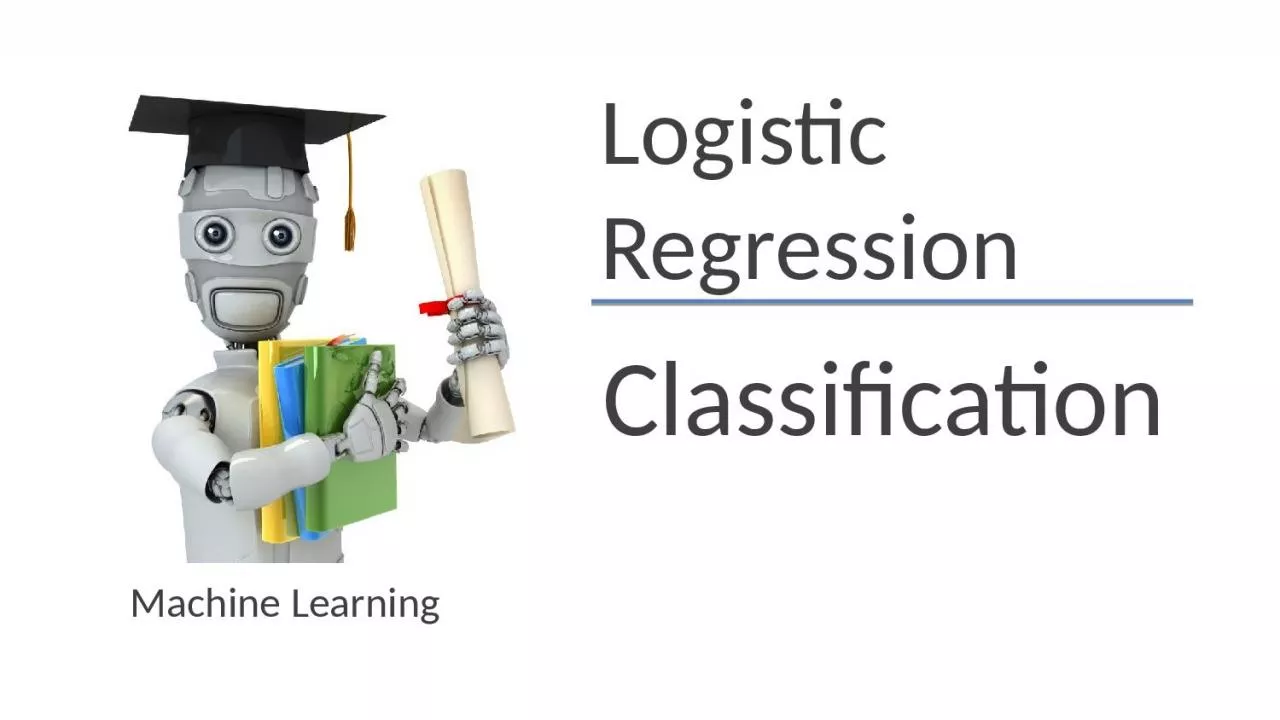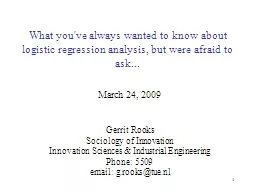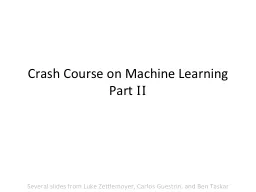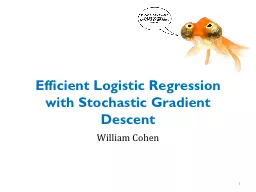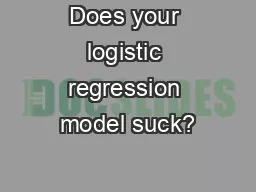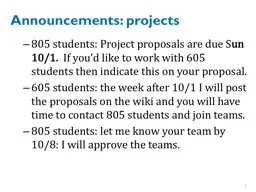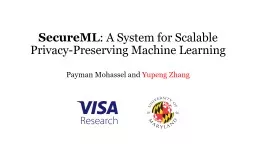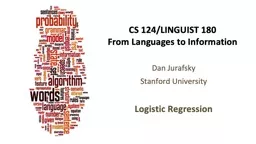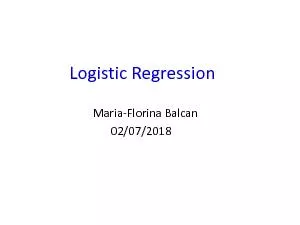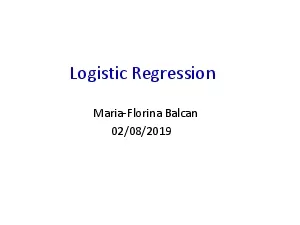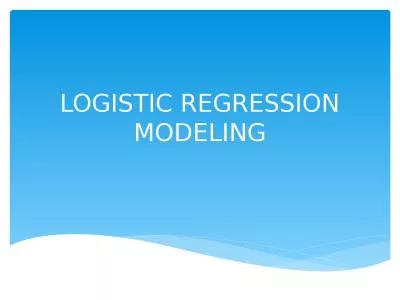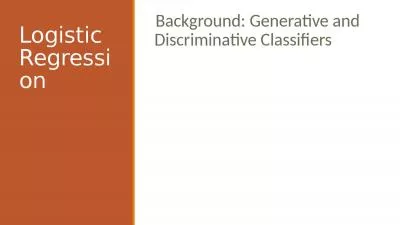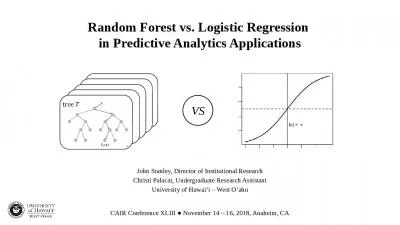PPT-Logistic Regression Classification
Author : helene | Published Date : 2023-07-22
Machine Learning Classification Email Spam Not Spam Online Transactions Fraudulent Yes No Tumor Malignant Benign 0 Negative Class eg benign tumor 1 Positive
Presentation Embed Code
Download Presentation
Download Presentation The PPT/PDF document "Logistic Regression Classification" is the property of its rightful owner. Permission is granted to download and print the materials on this website for personal, non-commercial use only, and to display it on your personal computer provided you do not modify the materials and that you retain all copyright notices contained in the materials. By downloading content from our website, you accept the terms of this agreement.
Logistic Regression Classification: Transcript
Download Rules Of Document
"Logistic Regression Classification"The content belongs to its owner. You may download and print it for personal use, without modification, and keep all copyright notices. By downloading, you agree to these terms.
Related Documents

